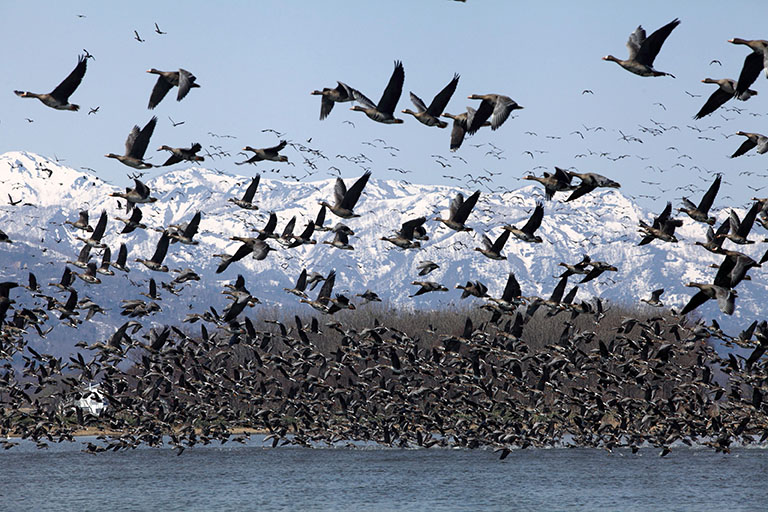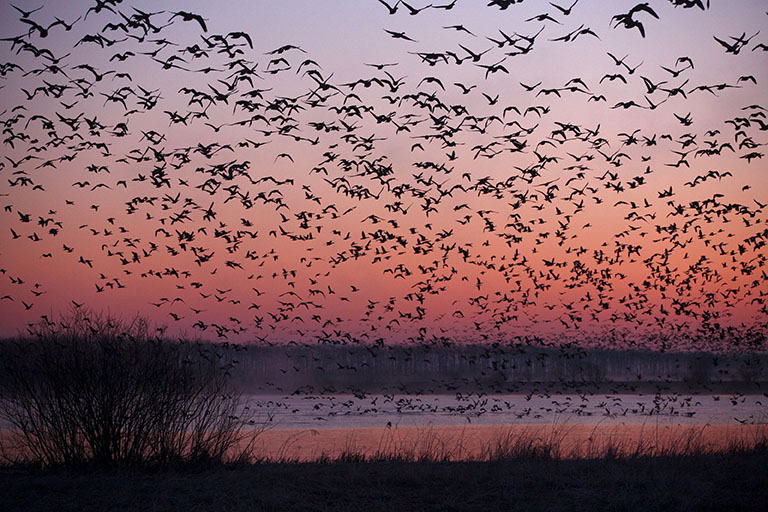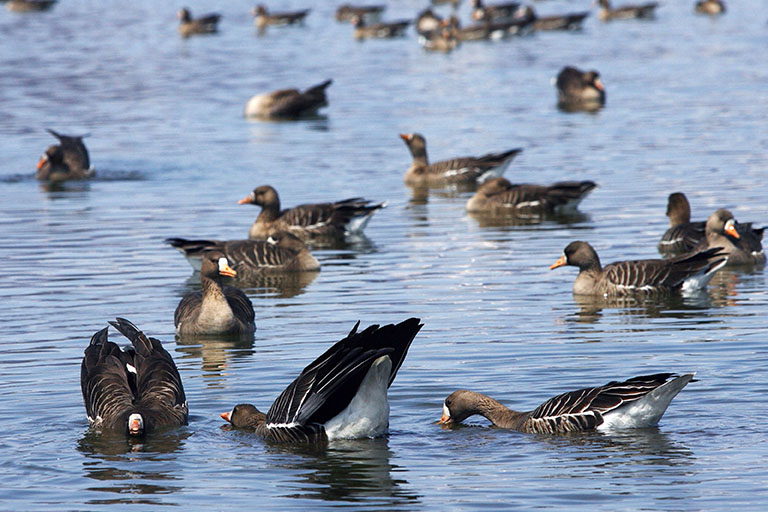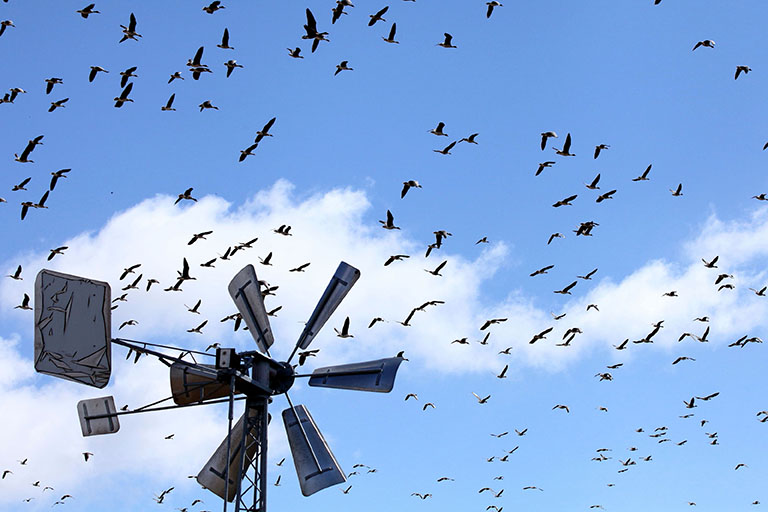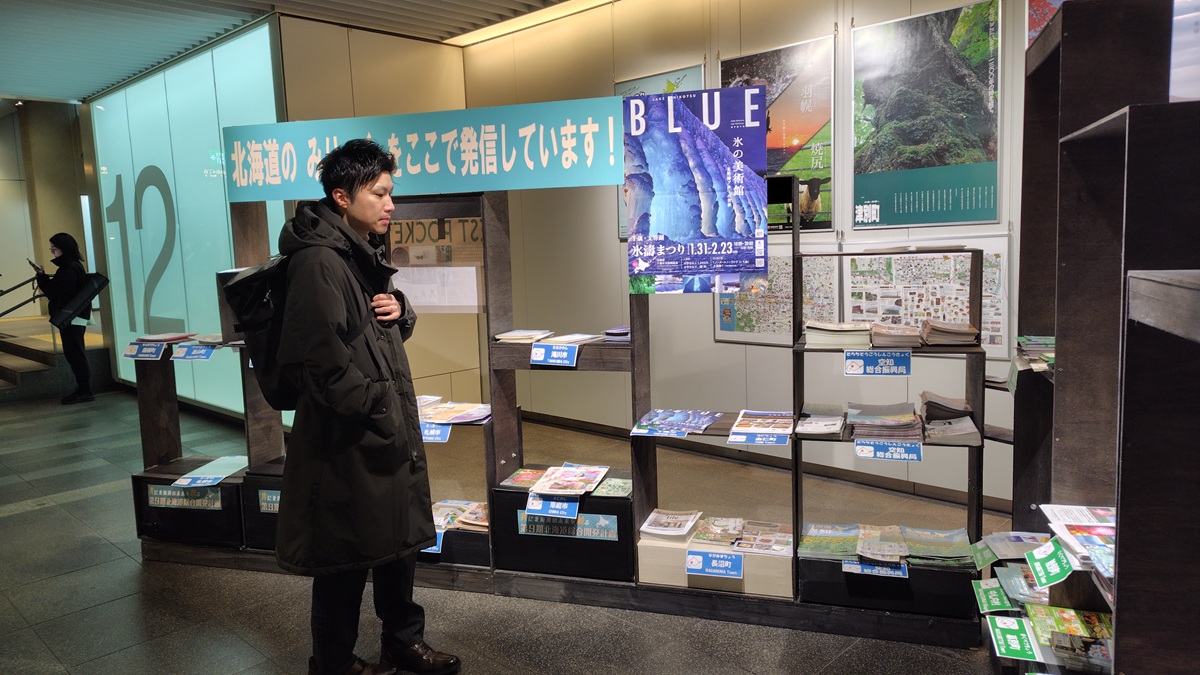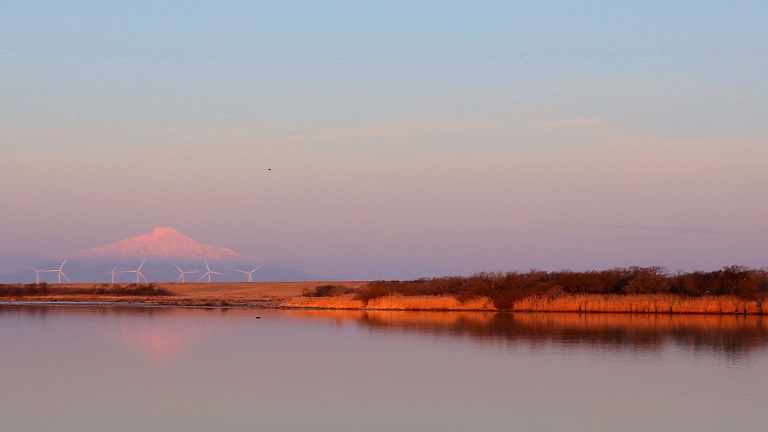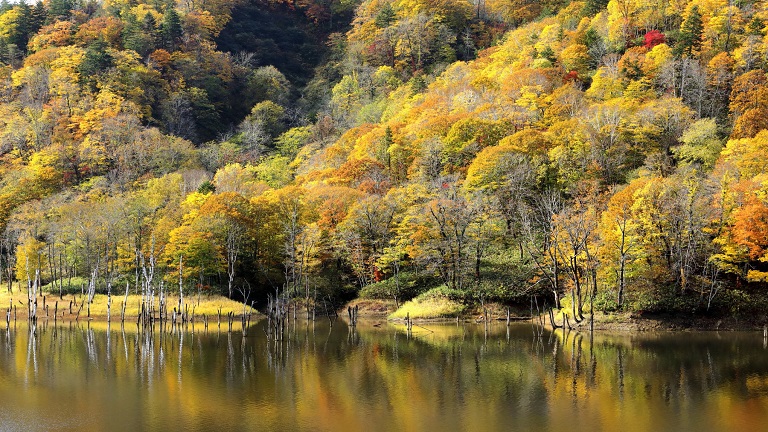One early dawn in April, several years before Miyajima Marsh was inducted into the Ramsar Convention in 2002, the feeble cry of a Greater white-fronted goose could be heard coming from the marsh.
The cry ended for a second, then the thundering sound of wings flapping broke the silence which enveloped the marsh. It was the sound of tens of thousands of Greater white-fronted geese taking flight at once, and I stood in awe of this amazing sight, unable to move. From this point on, I spend every spring in Hokkaido at Miyajima Marsh.
For two weeks in spring and autumn, flanked on the west by the Ishikari River, and in full view of Kabato Mountains capped with lingering spring snow, Miyajima Marsh becomes a sanctuary for the Greater white-fronted geese.
Miyajima Marsh, said to be the remnant of vast wetlands that once spread along the Ishikari River, is rumored to be part of lakes and marshes formed due to the flooding of the river, or from a subterranean river of the Ishikari River, though the findings are inconclusive.
Regardless of the numerous lakes and marshes that are strewn along the shores of the Ishikari River, for some reason the Greater white-fronted geese seem to be attracted to this smaller marsh. It is truly an enigmatic and enchanting marsh.

